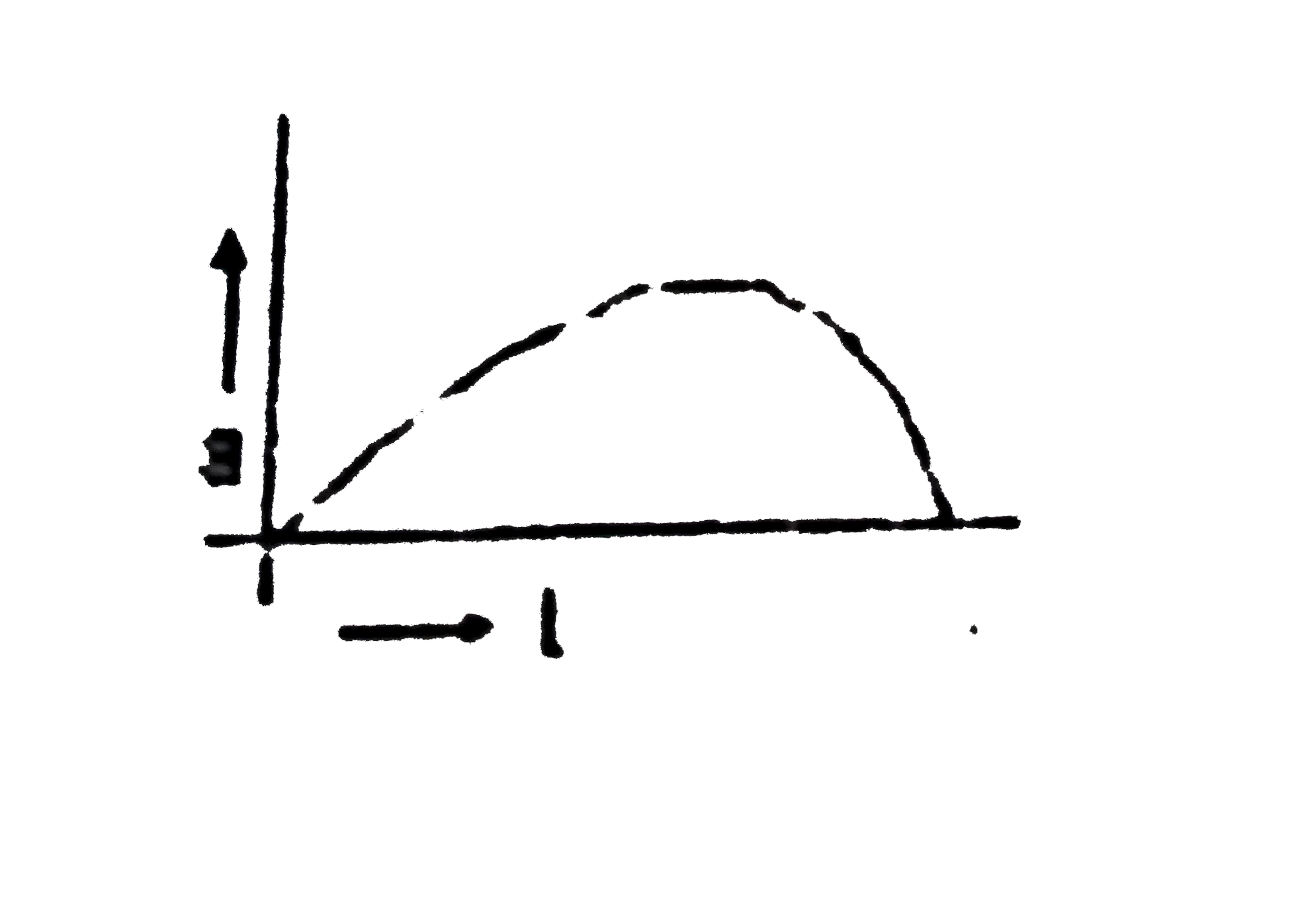A body moving in a straight line with constant acceleration covers distances a and b in successive equal time interval of t. The acceleration of the body is
a+bt2
b−at2
2b−a2t2
b−2at2
The correct Answer is:B
To find the acceleration of a body moving in a straight line with constant acceleration that covers distances a and b in successive equal time intervals of t, we can follow these steps:
1. Understanding the Motion:
- The body covers distance a in the first time interval t.
- It covers distance b in the second time interval t.
- The total time for both intervals is 2t.
2. Using the Equation of Motion:
- For the first interval (distance a):
a=ut+12αt2(Equation 1)
- For the second interval (distance b), the initial velocity for this interval is u+αt (the final velocity from the first interval):
b=(u+αt)t+12αt2(Equation 2)
3. Expanding Equation 2:
- Expanding the second equation:
b=ut+αt2+12αt2
b=ut+32αt2
4. Setting Up the Equations:
- From Equation 1, we have:
a=ut+12αt2
- From the expanded Equation 2:
b=ut+32αt2
5. Subtracting the Two Equations:
- Subtract Equation 1 from Equation 2:
b−a=(ut+32αt2)−(ut+12αt2)
- This simplifies to:
b−a=32αt2−12αt2
b−a=αt2
6. Solving for Acceleration:
- Rearranging gives us:
α=b−at2
Final Answer:
Thus, the acceleration α of the body is:
α=b−at2
- The body covers distance a in the first time interval t.
- It covers distance b in the second time interval t.
- The total time for both intervals is 2t.
- For the first interval (distance a):
a=ut+12αt2(Equation 1)
- For the second interval (distance b), the initial velocity for this interval is u+αt (the final velocity from the first interval):
b=(u+αt)t+12αt2(Equation 2)
- Expanding the second equation:
b=ut+αt2+12αt2
b=ut+32αt2
- From Equation 1, we have:
a=ut+12αt2
- From the expanded Equation 2:
b=ut+32αt2
- Subtract Equation 1 from Equation 2:
b−a=(ut+32αt2)−(ut+12αt2)
- This simplifies to:
b−a=32αt2−12αt2
b−a=αt2
- Rearranging gives us:
α=b−at2
Thus, the acceleration α of the body is:
α=b−at2
Similar Questions
A particle moving with a uniform acceleration along a straight line covers distances a and b in successive intervals of p and q second. The acceleration of the particle is
View SolutionAssertion: A body moving with constant acceleration always travels equal distance in equal time intervals.
Reason: Motion of the body with constant acceleration is a uniform motion.
View SolutionIf a body is moving with constant speed, then its acceleration
View SolutionA body covers 4.9m,14.7m,24.5mand34.3m in the successive seconds of motion. The acceleration of the body is
View SolutionVelocity of a body moving a straight line with uniform acceleration (a) reduces by 34 of its initial velocity in time t0. The total time of motion of the body till its velocity becomes zero is
View SolutionA body with initial velocity 8 m/s moves along a straight line with constant acceleration and travels 640 m in 40 s. For the 40 s interval, find
the average velocity
View SolutionA particle, starting from rest, moves in a straight line with constant acceleration a0 for a time interval t0.Then is accelerates at a constant rate 2a0 for time interval 2t0 .The distance travelled by the particle in time 3t0 from the starts is S . Then Sa0t20=
View SolutionA body moving with a constant acceleration travels distances 3 m and 8 m, respectively in 1 s and 2 s. Calculate:
(i)the initial velocity.
(ii)The acceleration of body.
View SolutionA particle is moving in a straight line whose acceleration versus time graph is given. Assume that initial velocity is in the direction of acceleration. Then
which of the statement is correct between time t=0 to t=t0.
 .
.
View SolutionA point mass starts moving in straight line with constant acceleration a from rest at t=0. At time t=2s, the acceleration changes the sign remaining the same in magnitude. The mass returns to the initial position at time t=t0 after start of motion. Here t0 is
View Solution
